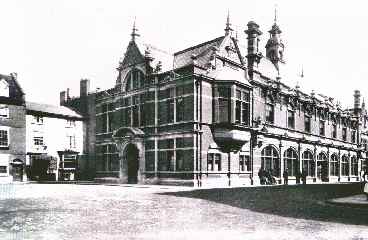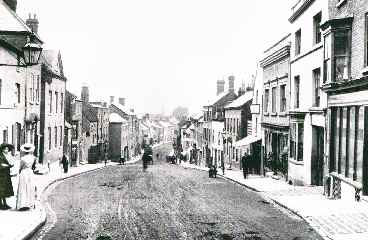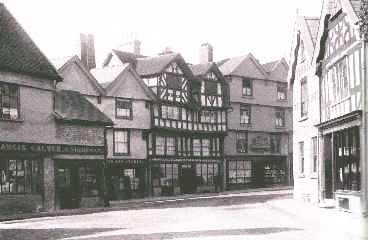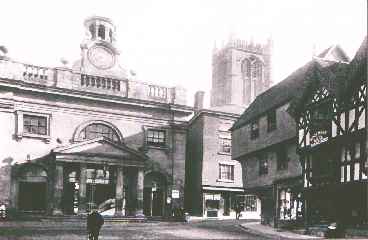Page 2.
Ludlow was also a planed town. Many medieval towns were similarly
the result of deliberate acts of creation by landowners. A patron would attempt
to fund a town as a specialised center of manufactures and trade, where the
products of different farming areas and of non-agricultural activities could
be exchanged, and would hope to profit from the rest of properties let to merchants
and from market tolls.
Planned medieval towns were usually laid out with 'burgage plot', long narrow
strips with a building at one end fronting on to a main street, extending to
a 'back lane' which acted as a service road. Sometimes such plots were laid
out along one main street, or sometimes on a grid pattern. At Ludlow , Old street,
Broad Street and Mill Street are surviving main street of the grid, and Raven
Lane, Bell Lane and Brand Lane the remaining service roads and cross lanes.
Planned towns usually had a wide market place where temporary stalls could be
set up. Sometimes's such temporary stalls became permanent buildings, and the
open market place became a maze of alleys and buildings without gardens or yards,
as has happened in the area between the castle and the bull ring at Ludlow.
|





